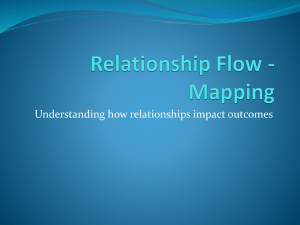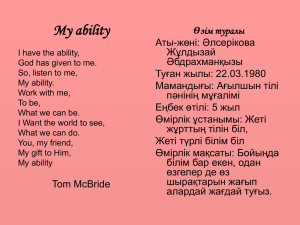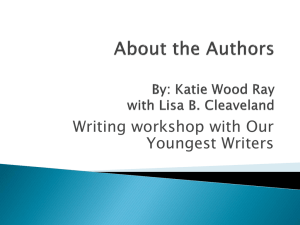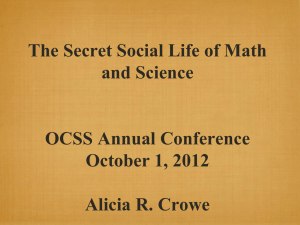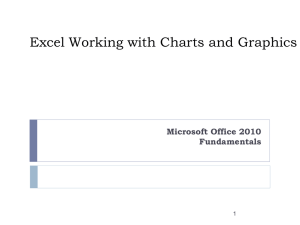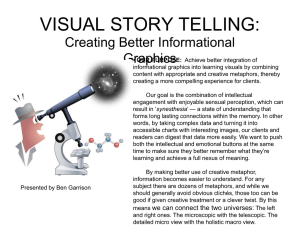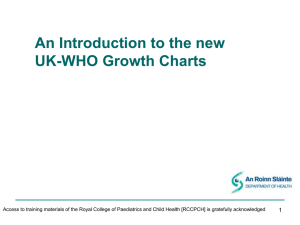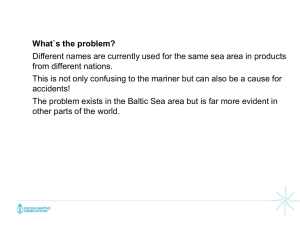File
advertisement
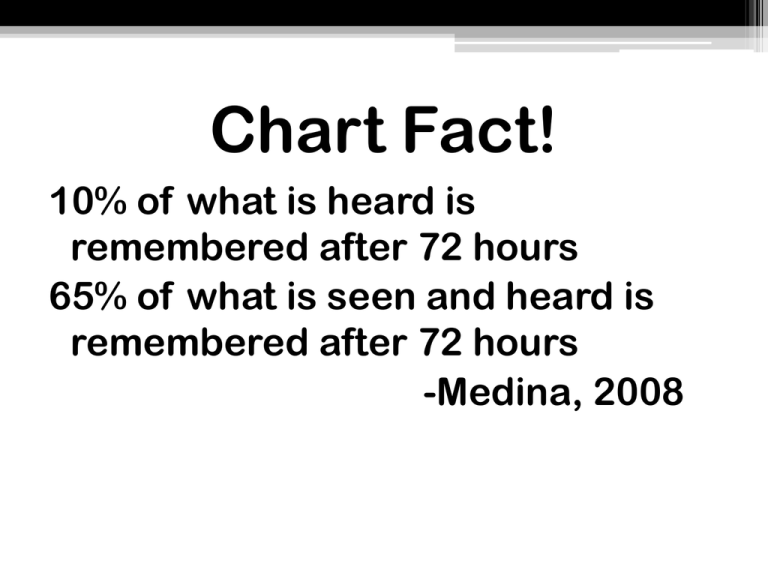
Chart Fact! 10% of what is heard is remembered after 72 hours 65% of what is seen and heard is remembered after 72 hours -Medina, 2008 Smarter Charts the third educator Kathryn DiMeo Independent Consultant August 20, 2013 How is the 2nd chart improved? Before . . . After . . . Color Matters Tips: Black is universal. LOVE neon! Color helps organize thinking by making strategies distinct! Only bold or highlight 10%. No MORE than 5 colors. Brain Science Behind the chart . . . Knowing what stimulate the brain to remember is important to understanding why some information is remembered and others ignored • Prior knowledge (connections) • Repetition • Engagement • Perception (use of the senses) • Investment It all starts with a TITLE! Title Tips Capture the main idea and move on! Say it in less words. Writers Have Lots of Tools to Help Us Generate Story Ideas! VS Need an Idea? Use kid friendly language. Title Tips Strong statement! Writers Show Not Tell! Writers Elaborate! Readers Predict! Questions? Feeling Done? Stuck on a tricky word? Need a beginning? Language Clarity and quality not quantity Choose words that are direct and explicit Should be “understood/readable” by most of your students Point to or hold up parts of the chart as you read it, to make it “readable” for non-readers and ESL students Make language more accessible for students by adding a gesture, prop or using facial expressions. (Cappellini 2005) Images Visual memory is the second strongest memory . . . . Images Clear Consistent Images Learning to Draw! Sketches and Notes Page 17 Figure 1.9 Chart Chums Learning to Draw SIMPLY . . . Student Art or Photographs Student Work Mentor Texts Exemplars & Rubrics Need Wall Space? Need Wall Space? Chart Booklets Table Tents Student Copies Chart Binders Pant Hangers Charts YIELD Independence Chart is not the goal but a vehicle to get them to the goal-using the strategy effectively and often. • • • • • Eye level Sticky note interactions Make a fuss/ Move It Limit it to about 4 charts Retire Old Charts Ways to Involve Kids in Chart Making They illustrate it They come up with and write the title You quickly add the words with them but the pictures are predone Make it interactive prepare it with the kids =cooking show *your mini lesson still needs to be within the time limits* Student Interaction Conference Prompts • What charts have you used today? How have they helped you? • Can you show me a place where the charts helped you? • What are you working on? Is there a chart that can help you? • Which chart don’t you use? Why? • Which chart do you use the most? Why? • If you could make a chart what would you make? Mini-Lessons • Readers/writers reread the charts before they start working. This helps us remember all the things we know about reading and writing. • When we get a little tired of working, we can give our brains a little rest by rereading the charts. This helps us remember what we need to be thinking about when we go back to work. • When readers/writers get stuck, we can go to charts to help us get unstuck. • When readers/writers are done, we bring our work to the chart and check: did I do each of those things? Going Digital? My charts would be a better learning tool for my students if I . . . . For More Information . . . • Chartchums.wordpress.com • Smarter Charts by Majorie Martinelli and Kristine Mraz (and another new book coming soon!) • http://readingandwritingproject.com/ resources, choose charts • Pinterest • Classrooms of the teachers around you! Please note the material in this session is the result of MANY teachers in Lake Orion and in districts all over the country. Featured charts can be found in classrooms all across the country and in many cases across the internet. Thank you teachers!
